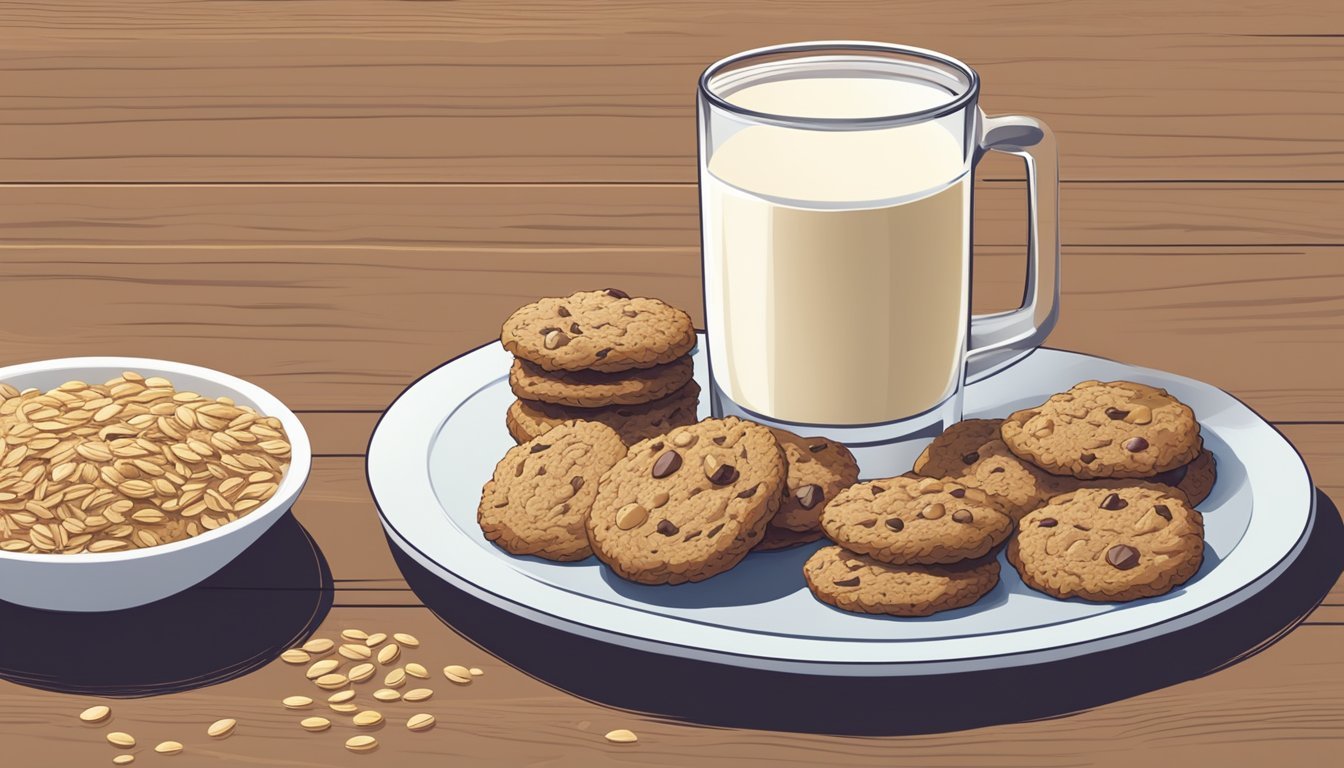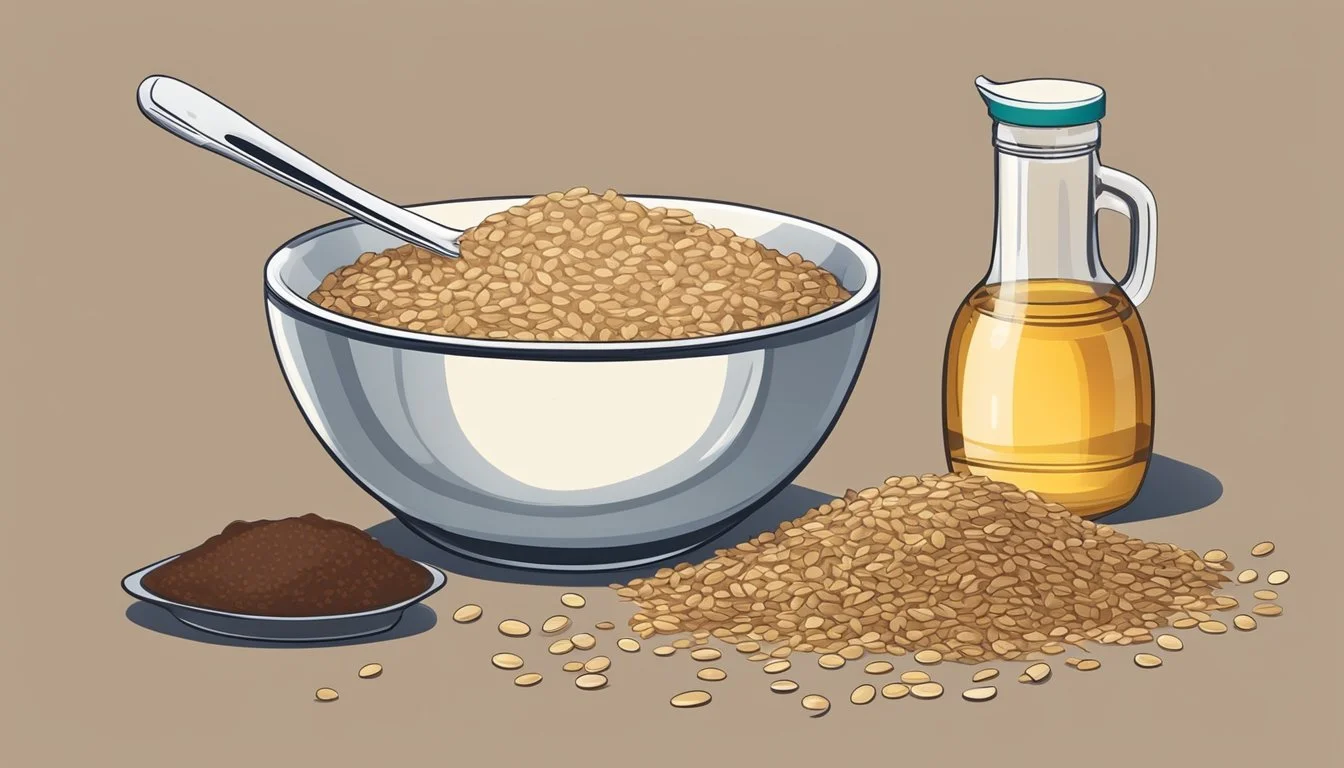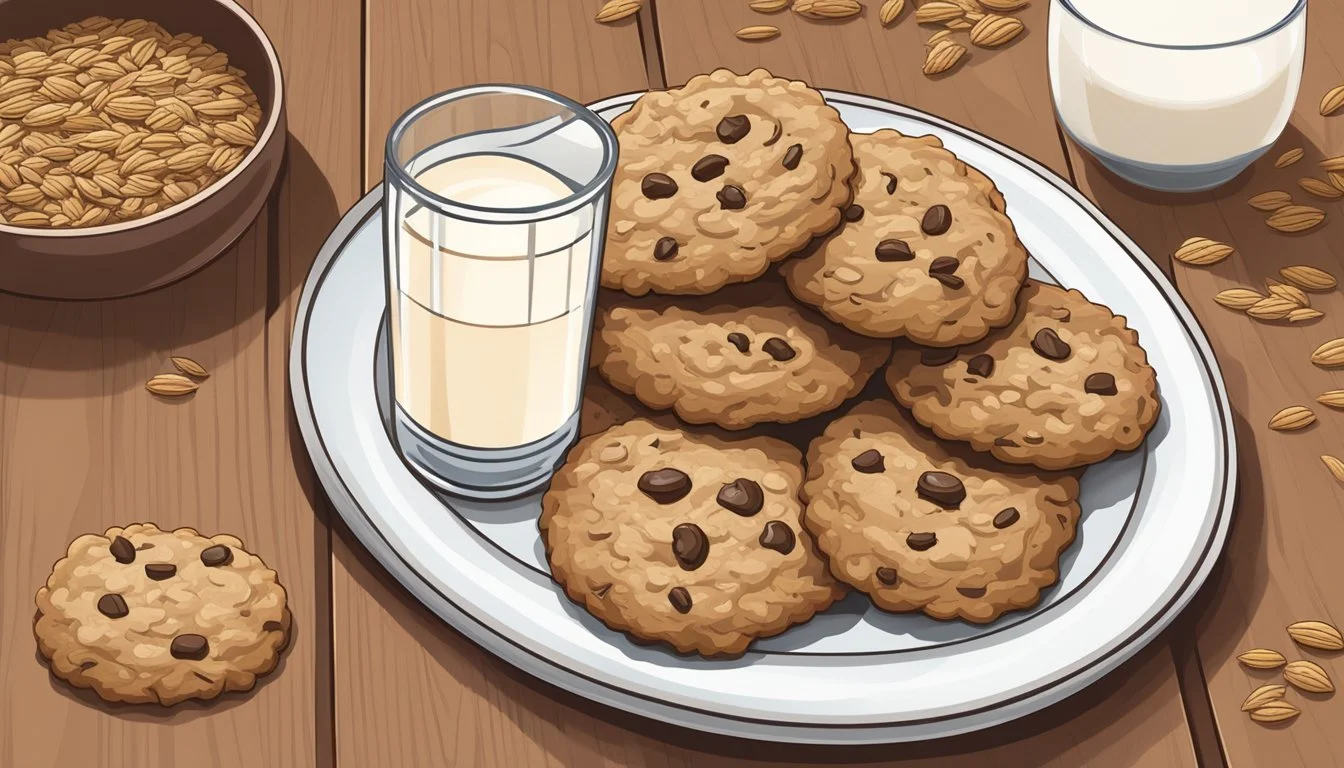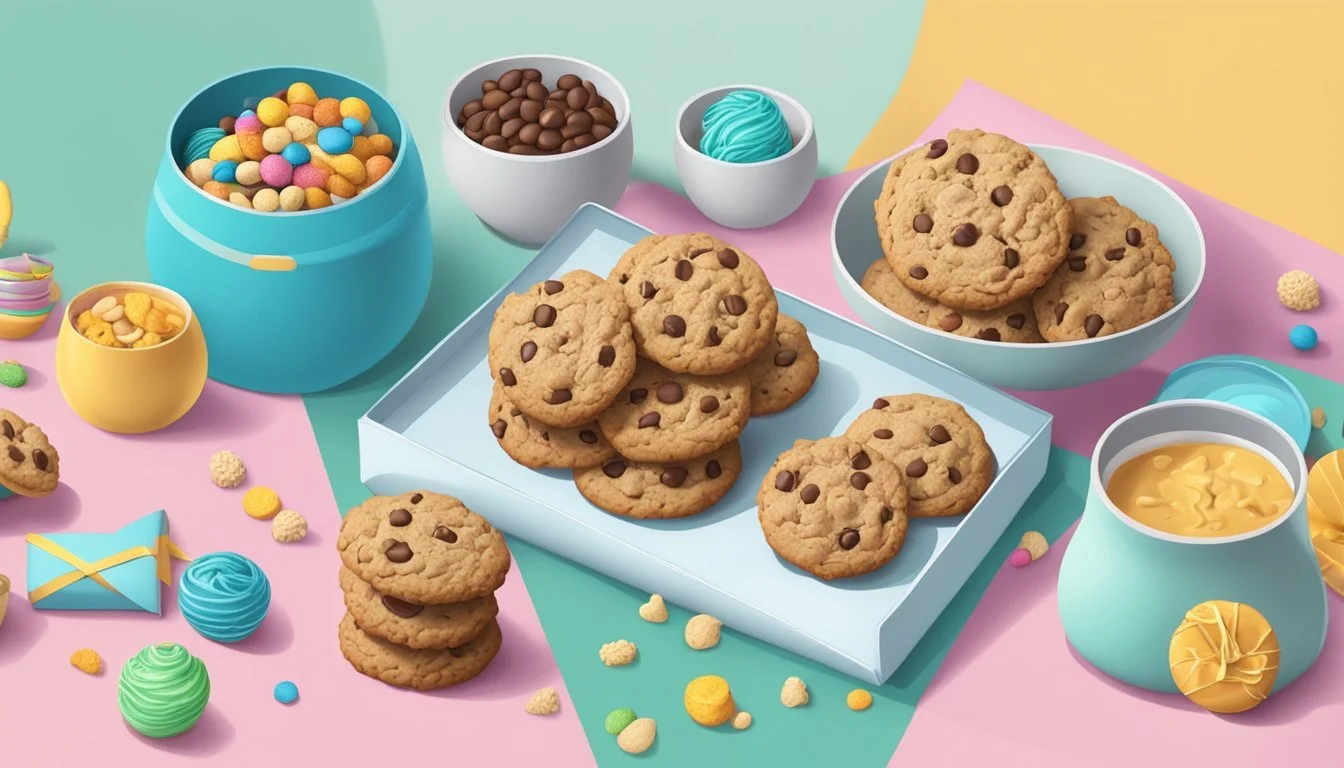Best-Ever Lactation Cookies Recipe
Top Picks for New Moms
Discover > Healthy Living Through Food > Best-Ever Lactation Cookies: Top Picks for New Moms
Lactation cookies are not only a healthy treat but also a great way to enhance your breast milk supply. These delicious cookies are made with ingredients such as oats (how long do oats last?), brewer's yeast (how long does brewer's yeast last?), flaxseed, and sometimes fenugreek, which are believed to support milk production. They are a perfect snack for nursing mothers, especially when you're on the go.
When it comes to making lactation cookies, using the right ingredients is key. You want to make sure you have high-quality ingredients like vegan butter, healthy cookie ingredients, and lactation treats that will give you the best results. You can also use a food processor to mix the ingredients thoroughly, ensuring that they are well combined.
Using the right cookie sheets is also important. You want to use air-tight containers to keep the cookies fresh and prevent them from going stale. You can also line your sheets with parchment paper to ensure that the cookies don't stick.
Lactation cookies have become a sweet treat for nursing mothers, offering not only a healthy snack but also helping with breastmilk supply issues. With the right ingredients and tools like food processors, cookie sheets, and air-tight containers, you can create delicious cookies that will satisfy your sweet tooth and keep your milk flowing.
Understanding Lactation Cookies
Lactation cookies are specially designed treats intended to support breast milk production for nursing mothers. They contain ingredients known as galactagogues, such as brewer's yeast, which are substances believed to help increase milk supply.
In a medium bowl, you can mix brewer's yeast with other delicious cookie recipe ingredients like oats, flaxseed, and healthy cookie ingredients. Adding a teaspoon of baking soda (how long does baking soda last?) will also give the cookies a nice texture and flavor. Lactation cookie recipes have become increasingly popular as more mamas seek to get a boost in supply.
Using these cookies for nursing mamas can be an easy and tasty way to help with milk production. Among the numerous components in these cookies, certain key ingredients stand out for their potential lactation benefits:
Brewers yeast: A rich source of B vitamins and amino acids, brewer's yeast is frequently cited for its role in enhancing breast milk production.
Oats: High in fiber and iron, oats can be beneficial in maintaining a healthy milk supply.
Flax: With omega-3 fatty acids and fiber, flax seeds support a mother’s overall nutrition.
These ingredients, combined within the cookies, aim to provide not only a nutritious snack but also a boost to breast milk production. While lactation cookies can be part of a broader approach to enhancing milk supply, they are most effective when consumed alongside a well-balanced diet and proper hydration.
Experts recommend that breastfeeding mothers incorporate a variety of galactagogues and maintain a nutritious diet to support milk production. It's essential to note that individual experiences with lactation cookies may vary, and what works for one mother might not work for another.
Mothers considering lactation cookies should consult with a healthcare provider to ensure that these treats are suitable for their specific dietary needs and breastfeeding goals. As with any supplement or dietary change during breastfeeding, professional guidance is crucial.
Key Ingredients for Lactation Cookies
Lactation cookies are a popular choice for nursing mothers aiming to boost their milk supply. Certain ingredients are believed to promote lactation and provide nutritional benefits. Below are three ingredients frequently spotlighted for their milk-boosting properties and their specific contributions.
The Role of Brewer’s Yeast
Brewer’s yeast is a critical component often found in lactation cookies. It is rich in B vitamins, including vitamin B12, protein, and iron—all of which are beneficial for energy levels and overall nutrition. Nursing mothers value brewer’s yeast for its potential to help increase milk supply.
Nutritional highlights of Brewer’s Yeast:
Protein: For muscle and tissue repair
B Vitamins: For energy and well-being
Iron: For blood production and energy
Oats: A Milk-Boosting Staple
Oats are a staple ingredient in lactation cookies for two main reasons: they provide a high fiber content and contain beta-glucan, which may help to enhance milk production. Additionally, oats have the benefit of being a comforting, whole grain that offers sustained energy to tired mothers.
Key components of Oats:
Magnesium: Important for muscle function and mood regulation
Beta-glucan: A fiber thought to influence prolactin levels for milk production
Flaxseed and Its Benefits
In the world of lactation cookies, flaxseed plays a significant role. Flaxseeds (how long do flaxseeds last?) are a source of omega-3 fatty acids, which not only support the nutrition of the nursing mother but are also crucial for the baby’s brain development. Furthermore, flaxseeds contain phytoestrogens that may have a positive impact on milk production.
Important elements of Flaxseed:
Omega-3 fatty acids: For brain health and development
Phytoestrogens: Plant compounds that may influence lactation
The Perfect Lactation Cookie Recipe
Creating the perfect lactation cookie involves a blend of nutrient-rich ingredients designed to support breastfeeding mothers. This recipe provides an excellent source of energy and uses ingredients believed to promote milk production.
Step-by-Step Baking Guide
Preheat the oven: Begin by setting the oven to 350°F (175°C). Line a baking sheet with parchment paper for easy cleanup.
Cream the wet ingredients: In a large bowl, cream together 1 cup of softened butter, 1 cup of sugar, and 1 tablespoon of vanilla extract until the mixture is light and fluffy.
Incorporate the egg: Add 1 egg to the creamed mixture and continue to beat until the ingredients are well combined.
Whisk the dry ingredients: In a separate bowl, whisk together 2 cups of all-purpose flour, 1 teaspoon of baking powder, and 1/2 teaspoon of baking soda.
Combine the mixtures: Gradually blend the dry ingredients into the wet mixture.
Stir in the oats and chocolate: Fold in 3 cups of rolled oats (how long do rolled oats last?) and 1 cup of chocolate chips (how long do chocolate chips last?).
Scoop onto the baking sheet: Use a spoon or cookie scoop to drop dollops of dough onto the prepared baking sheet.
Bake the cookies: Place the baking sheet in the oven and bake for about 10-12 minutes or until the cookies are golden brown.
Ingredient Measurements and Mixes
All-purpose flour- 2 cups:
Role: Provides structure
Baking powder - 1 teaspoon:
Role: Leavening agent for rise
Baking soda - 1/2 teaspoon:
Role: Works with acid to help with leavening
Sugar - 1 cup:
Role: Adds sweetness
Butter - 1 cup, softened:
Role: Fat that adds flavor and texture
Egg - 1 large:
Role: Binds ingredients, adds moisture
Vanilla extract - 1 tablespoon:
Role: Enhances flavor
Rolled oats - 3 cups:
Role: Adds texture and nutrients
Chocolate chips - 1 cup:
Role: Provides sweet chocolatey chunks
The measurements of each ingredient are specifically calibrated to yield a balanced flavor and optimal texture, ensuring each oatmeal lactation cookie is satisfying and beneficial for nursing mothers.
Customizing Your Lactation Cookies
Creating lactation cookies that cater to specific dietary needs and taste preferences involves choosing the right substitutions and add-ins. Here are some ways to personalize lactation cookies to suit vegan and gluten-free diets, as well as how to enhance their flavor and texture profiles.
Vegan and Gluten-Free Variations
For those requiring vegan lactation cookies, substitutes for common non-vegan ingredients are crucial. Coconut oil can replace unsalted butter to maintain the fatty richness essential for the cookies, while dairy-free milk and dark chocolate chips are excellent for maintaining the classic chocolate chip taste.
Non-Vegan Ingredient - Vegan Substitute:
Unsalted butter -> Coconut oil
Dairy Milk -> Almond milk (how long does almond milk last?) or other plant-based milk
Chocolate chips -> Vegan dark chocolate chips
For a gluten-free diet, one can utilize a range of gluten-free flours (how long does flour last?), such as almond or oat flour (how long does oat flour last?), to ensure the cookies are safe to consume without sacrificing texture.
When a recipe calls for wheat flour, you can opt for gluten-free substitutes like almond flour (how long does almond flour last?) or oat flour.
Adding Flavors and Textures
Enhancing the flavor and texture of lactation cookies can make them more enjoyable without compromising their purpose. Those looking for added sweetness and moistness can incorporate mashed banana into the dough. For a touch of spice, cinnamon pairs excellently with banana, or when used alone, it provides a warm note.
For texture, raisins (how long do raisins last?) or nuts (how long do nuts last?), like almonds (how long do almonds last?), can be mixed in to offer a chewy contrast or a satisfying crunch, respectively. Here is a list of potential flavor and texture additions:
When adding these ingredients, one should consider the balance of flavors and textures to ensure the cookies are not only beneficial but also delightful to eat.
Storing and Freezing Lactation Cookies
Proper storage and freezing ensure lactation cookies remain delicious and nutritious.
Maximizing Shelf Life
After baking, lactation cookies should be cooled completely on a baking sheet. Once cooled, they can be stored in an airtight container. To maintain freshness, one can line the container with parchment paper and place cookies in a single layer, separating multiple layers with additional parchment. Stored at room temperature, lactation cookies will generally remain fresh for up to one week.
Freezer-Friendly Lactation Cookies
Lactation cookies can be frozen either as dough or after baking.
Freezing Cookie Dough:
Portion the dough into individual cookie sizes on a baking sheet.
Freeze until solid.
Transfer the frozen dough balls to a freezer bag or airtight container, label with the date, and store in the freezer for up to 3 months.
Freezing Baked Cookies:
Cool the baked cookies completely.
Place the cookies in a single layer on a baking sheet to freeze, avoiding any overlapping.
Once frozen, transfer to a freezer bag or airtight container, separating layers with parchment paper to prevent sticking.
To thaw, one simply removes the desired amount of cookies and lets them come to room temperature or warms them briefly in a microwave or oven.
Boosting Your Milk Supply Naturally
For new moms seeking to enhance their breast milk supply, dietary selections, and lifestyle habits play crucial roles. Incorporating specific foods and managing daily routines can significantly influence lactation.
Dietary Considerations
The diet of a nursing mother should include certain key ingredients known to support breast milk production. These components can be integrated into meals and snacks throughout the day to help maintain a healthy milk supply.
Fenugreek: Contains phytoestrogens that are believed to help increase milk production. New moms can consume it in tea or capsule form.
Fennel: Acts as a galactagogue, potentially aiding in the increment of breast milk supply. It can be incorporated into dishes or chewed on in seed form.
Alfalfa: High in vitamins and minerals, it may help stimulate lactation when consumed as sprouts or in supplement form.
Blessed Thistle: Often used in herbal remedies, this herb is traditionally known for its potential to boost milk production.
Additionally, moderating the intake of sugar, including alternatives like coconut sugar (how long does coconut sugar last?), is advisable for maintaining overall health and well-being.
Lifestyle Factors Influencing Milk Production
Managing stress and seeking guidance from experts are key lifestyle factors that can impact breast milk production.
Stress Management:
Chronic stress can impede lactation. Practices such as meditation, yoga, or deep-breathing exercises can be beneficial.
Sufficient sleep and relaxation are vital for maintaining hormonal balance essential for milk production.
Professional Support:
Consulting with a lactation consultant can provide personalized strategies for enhancing breast milk supply.
In some cases, prescription medications might be recommended as part of a plan to manage specific lactation issues.
Additionally, new moms should consider the role of physical activity and hydration in maintaining overall health, which in turn can support lactation.
Troubleshooting Common Baking Issues
When baking lactation cookies, encountering issues with texture and consistency or navigating changes due to altitude and humidity can be common. Knowledge of how to adjust the recipe and baking process can lead to successful outcomes.
Cookie Texture and Consistency
Cookies should be soft yet firm, but sometimes they turn out too hard or too crumbly. This often relates to the balance of ingredients and baking time.
Incorrect Flour Measurement: Using too much flour can make the cookies dense. Use a scale to measure all-purpose or oat flour for precision.
Old Baking Powder or Soda: These leavening agents lose effectiveness over time, leading to flat cookies. Ensure they are fresh and remember, baking powder adds volume, while baking soda aids in browning.
Overmixing the Dough: Develops excess gluten, causing toughness. Mix until just combined.
Baking Time: Overbaking results in hard cookies. Remove cookies from the oven when the edges are just set but the center is still soft.
Adjustments for Altitude and Humidity
High Altitude: Gravity is lower, causing gases created by baking soda and powder to expand more and escape quickly. For every 1,000 feet above sea level:
Decrease baking powder: Reduce by 1/8 teaspoon per teaspoon.
Decrease sugar: Cut by 1-2 tablespoons per cup.
Increase liquid: Add 1-2 tablespoons per cup.
Increase oven temperature: Raise by 15°-25°F.
High Humidity: Moisture in the air can make the cookie dough sticky and cookies less crisp.
Decrease liquids: For each cup of liquid, reduce by 1-2 teaspoons.
Increase baking time: This may be slight but necessary to achieve the desired crispness.
Store ingredients properly: Keep flour, sugar, and leavening agents in airtight containers to prevent them from absorbing moisture.
Lactation Cookies as Gifts and Snacks
Lactation cookies offer a twofold benefit: they are a thoughtful gift for nursing moms and a convenient snack to support breastfeeding. These wholesome treats are packed with ingredients believed to aid in milk production, serving as a practical and delicious supply boost.
Gift-Giving Considerations:
Lactation cookies are a considerate present for new mothers adjusting to the demands of breastfeeding.
A personalized batch can bring joy and a sense of support, showing thought and care for the recipient's well-being.
These cookies can also be presented beautifully in gift boxes or tins, accompanied by heartfelt notes or photos that celebrate motherhood.
Snacking Benefits:
Ideal for busy new parents, lactation cookies are easy to eat while nursing or pumping.
They are designed to be nutrient-dense, often incorporating oats, flaxseed, and brewer's yeast to yield potential lactation benefits.
As a snack, lactation cookies are both satisfying and functional, providing sustenance during the frequent feedings that are typical for breastfeeding mothers.
Convenience:
Easily consumed with one hand while tending to a baby.
Nutrient-rich:
Ingredients selected for their potential to support milk production.
Enjoyment:
Varied flavors cater to the personal taste preferences of nursing mothers.
By selecting lactation cookies as a gift or a snack, individuals show their support for breastfeeding mothers, contributing to their nutritional intake and offering a boost to their daily routine.
Additional Resources and Support
For nursing mothers interested in making their lactation cookies, numerous recipes are available. Websites like KellyMom and La Leche League offer comprehensive guides, ingredient lists, and step-by-step tutorials to ensure success in the kitchen.
If a more personal touch is required, lactation consultants can be invaluable. They can provide tailored advice on how to integrate lactation cookies into a mother's diet to potentially increase milk supply. A list of certified lactation consultants can be found on the International Lactation Consultant Association (ILCA) website.
For those who exclusively pump, online forums and support groups offer a space to exchange tips and experiences. The Exclusive Pumping website and associated Facebook group are structured specifically for their needs.
Below is a helpful breakdown of available resources:
Resource Type - Example Resources:
Recipe Websites:
KellyMom
La Leche League
Tutorial Platforms:
YouTube
BabyCenter
Lactation Consultants:
International Lactation Consultant Association
Support Groups:
Exclusive Pumping Facebook Group
Mothers interested in the science behind milk-boosting ingredients can refer to academic articles and nutritional guides. Journals like the Journal of Human Lactation provide peer-reviewed research on the topic.
Breastfeeding mothers seeking to increase their milk supply through lactation cookies have access to a variety of resources, from recipes and tutorials to professional consultation and community support. These tools can help mothers navigate the journey of ensuring adequate nutrition for both themselves and their babies.









